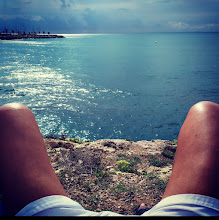domingo, 5 de enero de 2025
HERMAN HEIJENBROCK 1871-1948 Amsterdam
Herman Heijenbrock (1871 in Amsterdam – 1948 in Blaricum), was a Dutch writer, painter, pastel draughtsman, and lithographer. He founded the "Museum van den Arbeid" in 1923, which later became NEMO Science Museum.
Biography
He was the son of a baker and merchant in marine equipment. According to the RKD he learned to paint at the "Academie voor Beeldende Kunsten" in Rotterdam.[1] Soon after graduation he visited the Borinage, a coal-mining district in Belgium. He found work in a theater making backdrops and later went to work as an art-journalist and draughtsman for the Rotterdams Nieuwsblad, which he quit in 1898 to become a professional landscape painter in Noordwijk. He returned to the Borinage to make sketches of the picturesque surroundings, but became depressed by the working conditions and the high amount of disease among the miners and their families. He tried to convince various influential artists to help him work on improving the working conditions of the common man, but met with little success. He wrote a pamphlet called "Onze samenleving in woord en beeld" (Amsterdam, circa 1899) in which he explained his view on working conditions, though he felt that social democracy was not the answer.[2]
The Museum van den Arbeid was opened in 1929 and was situated in an old school located on the corner of the Marnixstraat at Rozengracht 224-226 in Amsterdam (torn down, the site is currently a fire station ). In 1980 the name was changed to "Nederlands Instituut voor Nijverheid en Techniek" (NINT) and moved to the Tolstraat 127 (the former headquarters of the Royal Asscher Diamond Company). In 1997 the NINT closed and the collection was absorbed by NEMO. Nemo sold 400 of his works to the Gemeente Museum Helmond.[5] The archive of his museum is in the hands of the Amsterdam City Archives.[6]
His work is mostly inspired by factories and industrial workers of all shapes and kinds. The works he made of the area where he lived in Laren and Blaricum are confined to the few textile factories that the area had during his time there. He became known as 'de schilder van licht en arbeid' (the painter of light and work) and won many commissions for "portraits" of factories by leading Dutch businessmen. Heijenbrock's works often hang in museums near the old factories that commissioned them, such as the Hoogovensmuseum, Nemo, the Amsterdam Museum, and the museum in Helmond. He became a member of the Amsterdam artist collective Arti et Amicitiae, and in 1933 he helped found the Goois Museum in Hilversum.
www.aglutinart.blogspot.com
Suscribirse a:
Enviar comentarios (Atom)
OTTO DIX 1891-1969 Reuß-Gera, German Empire
Otto Dix (Untermhaus, Turíngia, Alemanya, 2 de desembre de 1891 – Singen, 25 de juliol de 1969) va ser un pintor de la nova objectivitat ...

-
“THE UNBEARABLE INDIFFERENCE” BY MIGUEL TADEO, NEW LGTBIQ EXHIBITION OF TRANSSEXUALIA IN CASA DE VACAS TRANSEXUALIA.ORG • JUNE 28, 2024 •...
-
Mario Moore, a Detroit native, received a BFA from the College for Creative Studies, Detroit, MI in 2009 and an MFA in Painting from the ...
-
weyrhere - weyrq nsfw X https://twitter.com › weyrhere Art! This is the NSFW account. I use AI tools and digital painting, no images ar...




































No hay comentarios:
Publicar un comentario